

Maximón
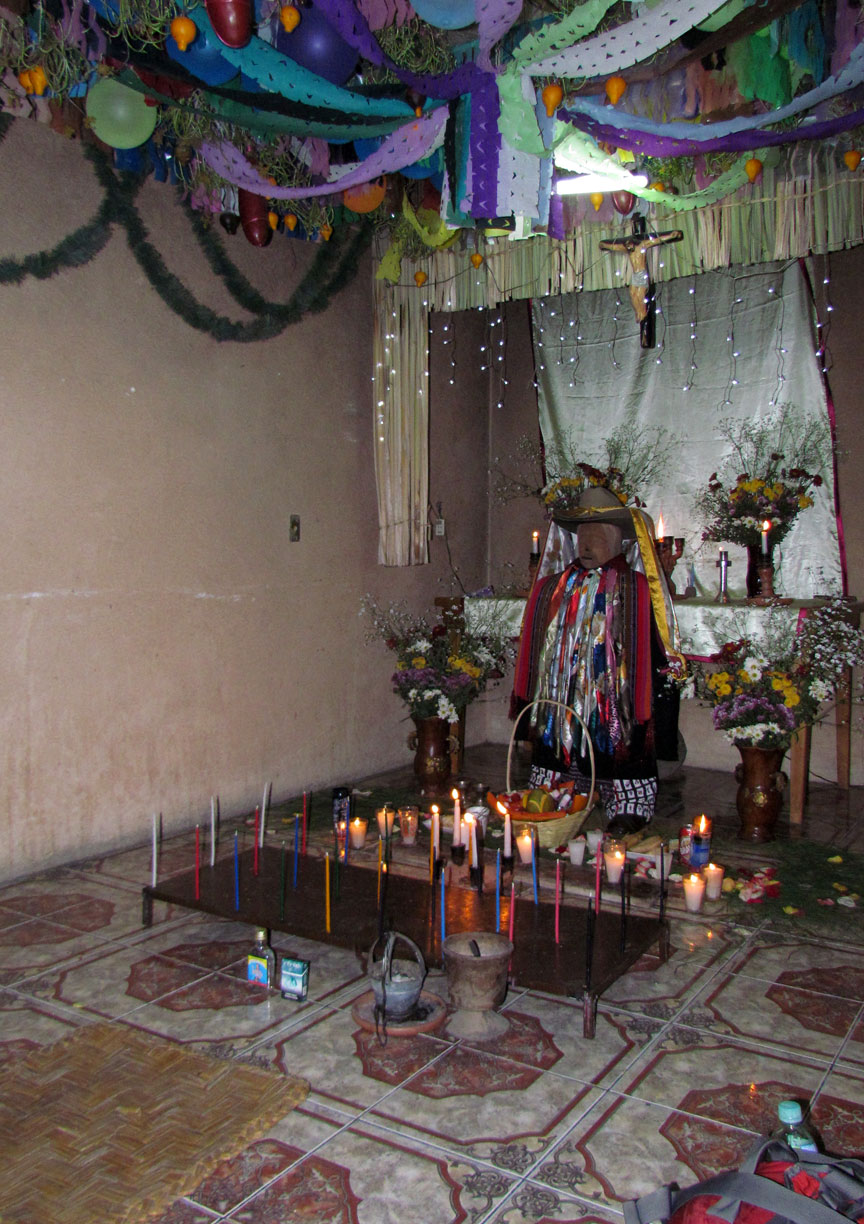
Maximón and candles, Santiago Atitlán
Maximón is a folk saint venerated in various forms by Maya people of several
towns in the highlands of Western Guatemala.
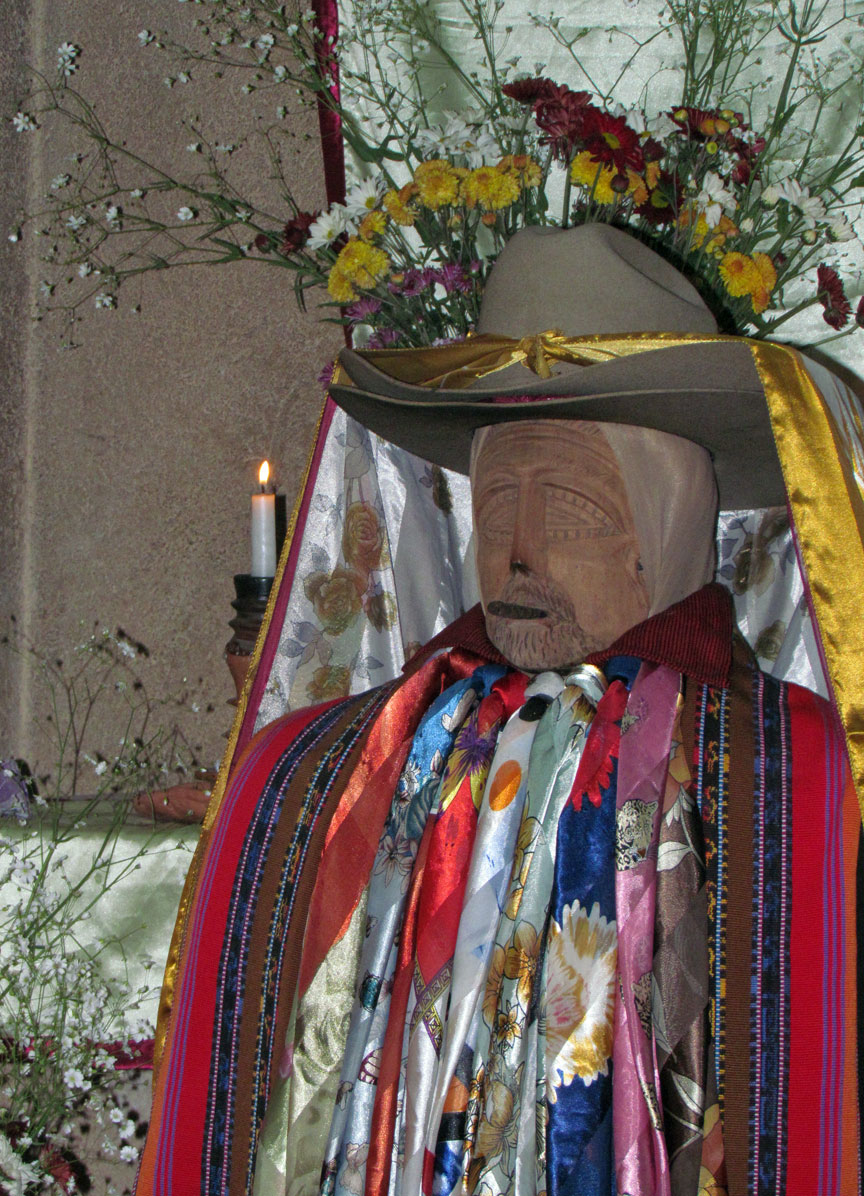
The origins of his cult are not very well understood by outsiders to the
different Mayan religions, but Maximón is believed to be a form of the
pre-Columbian Maya god Mam, blended with influences from Catholicism. Maximón
may also be called San Simón. The legend has it that one day while the village
men were off working in the fields, Maximón slept with all of their wives. When
they returned, they became so enraged they cut off his arms and legs (this is
why most effigies of Maximón are short, often without arms). Somehow he became a
god following this, perhaps he was possessed by the god prior. Later, with the
introduction of Christianity, Maximón's effigy replaced one of Judas Iscariot in
Christian Holy Week carnival rituals.
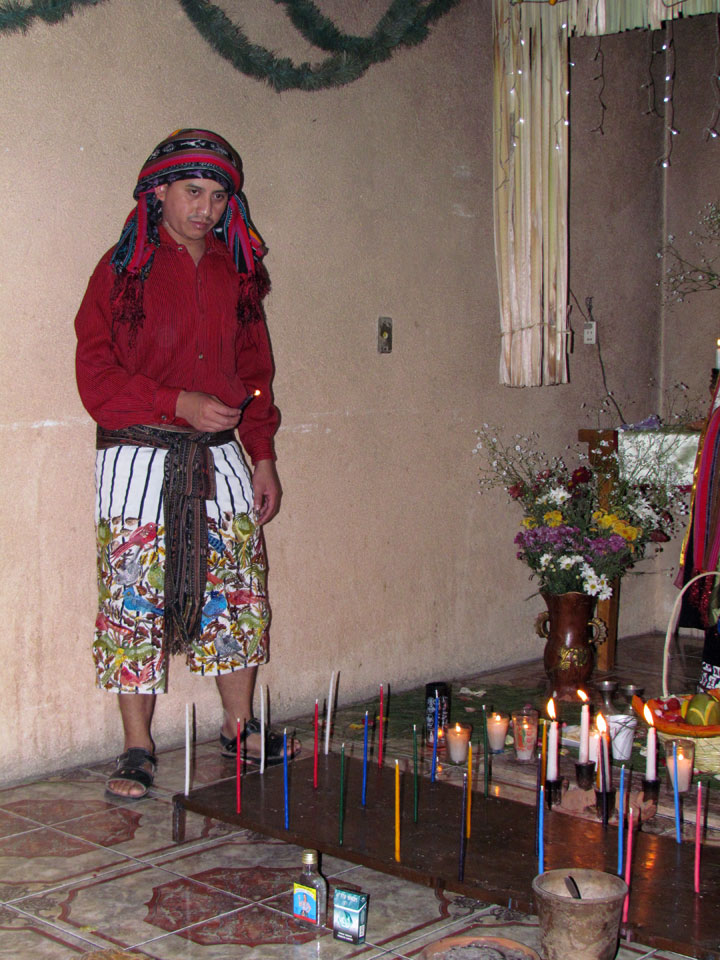
Nicholas performing the ritual
Where Maximón is venerated, he is represented by an effigy which resides in a different house each year, being moved in a procession during Holy Week. During the rest of the year, devotees visit Maximón in his chosen residence, where his shrine is usually attended by two people from the representing Cofradia who keep the shrine in order and pass offerings from visitors to the effigy. Worshippers offer money, spirits and cigars or cigarettes to gain his favor in exchange for good health, good crops, and marriage counseling, amongst other favors. The effigy invariably has a lit cigarette or cigar in its mouth, and in some places, it will have a hole in its mouth to allow the attendants to give it spirits to drink.
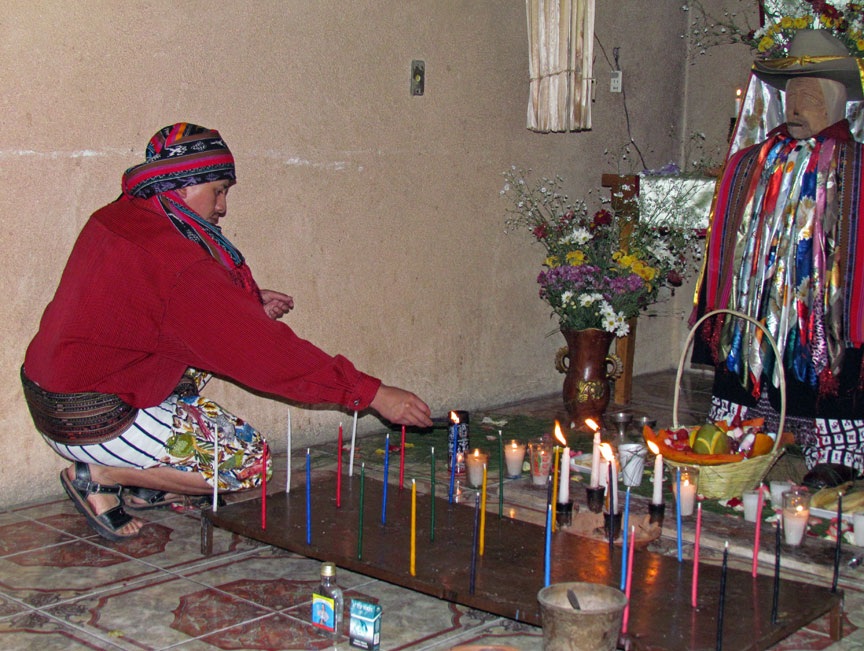
lighting the candles
Maximón is generally dressed in European 18th century style, although with many local variations. In Santiago Atitlán he is adorned with many colourful garlands, while in Zunil (where he is known as San Simón) he has a much more intimidating style, with his face obscured by dark sunglasses and a bandanna.

The worship of Maximón treats him not so much as a benevolent deity but rather
as a bully whom one does not want to anger. He is also known to be a link
between Xibalbá The Underworld and Bitol heart of heaven (Corazón del Cielo).
His expensive tastes in alcohol and cigarettes indicate that he is a very human
character, very different from the ascetic ideals of Christian sainthood.
Devotees believe that prayers for revenge, or success at the expense of others,
are likely to be granted by Maximón.

Maximón gets a cigarette
An interesting aspect of Maximon in the town of Santiago Atitlan is that of the lure of Maximon's laundry water. During the year preceding Easter week when Maximon's clothing is washed, the waste water is saved and distributed to local shop keepers. These vails of gray, waste water are then sold to locals. The idea is that when sprinkled around the threshold of the shop doorway, the waste water will entice customers into the shop to make a purchase.
Text from Wikipedia

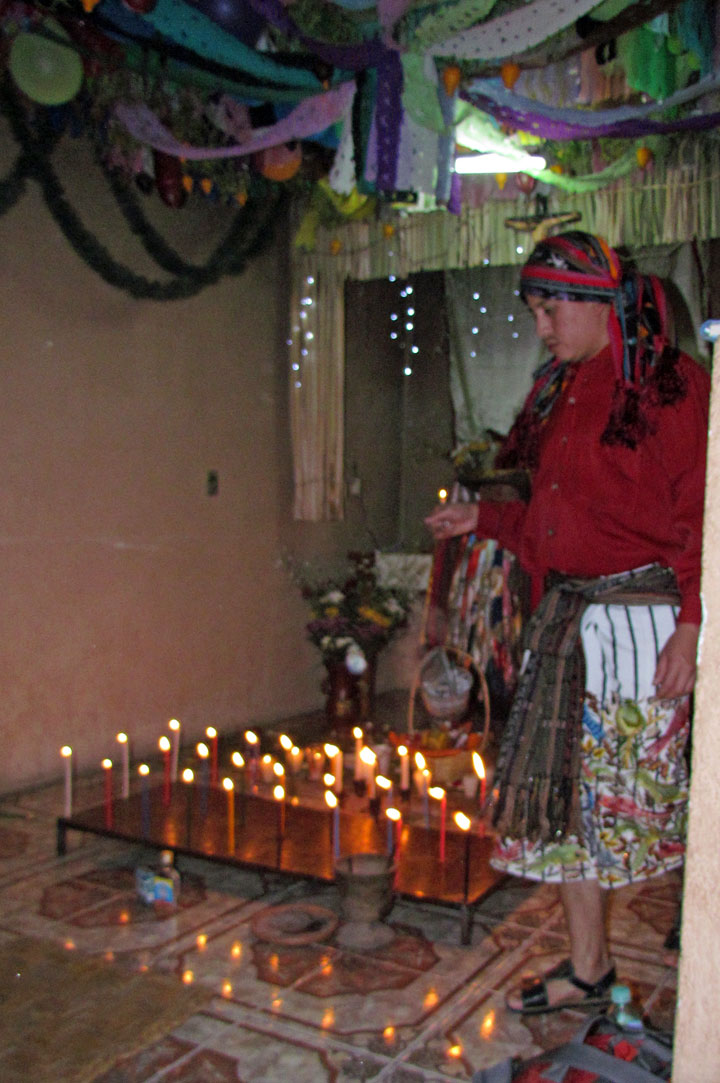
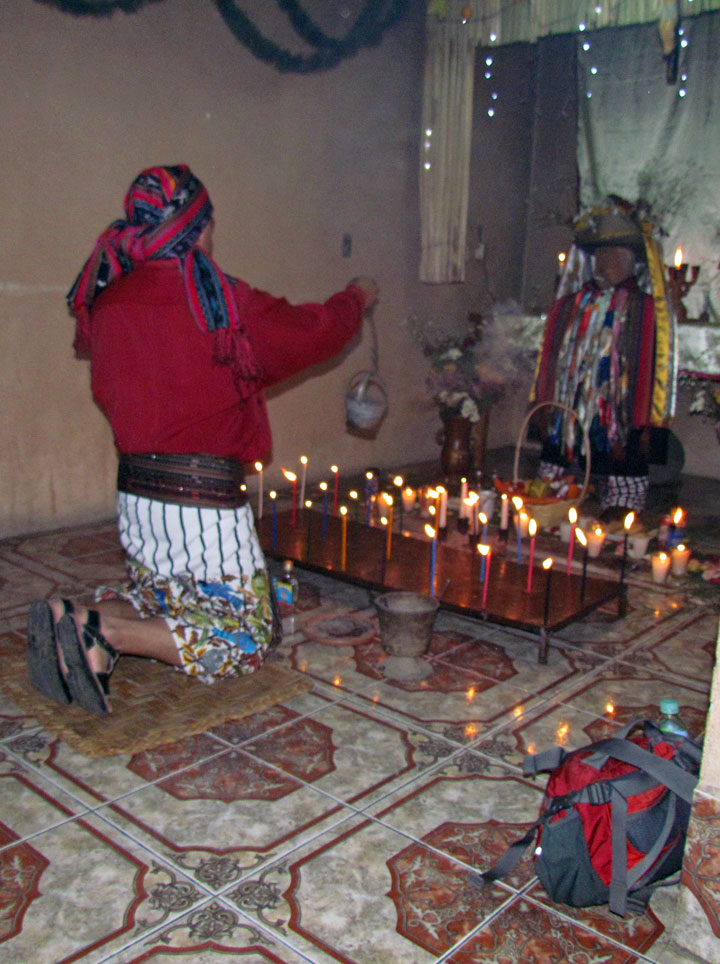
incense
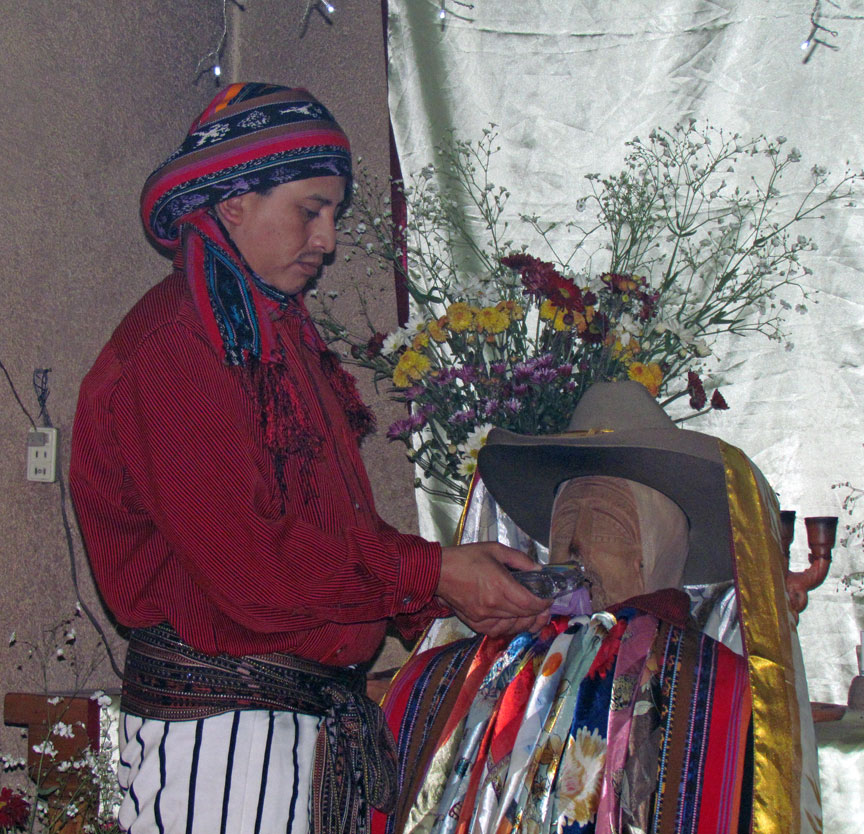
Maximón gets a drink

another cigarette
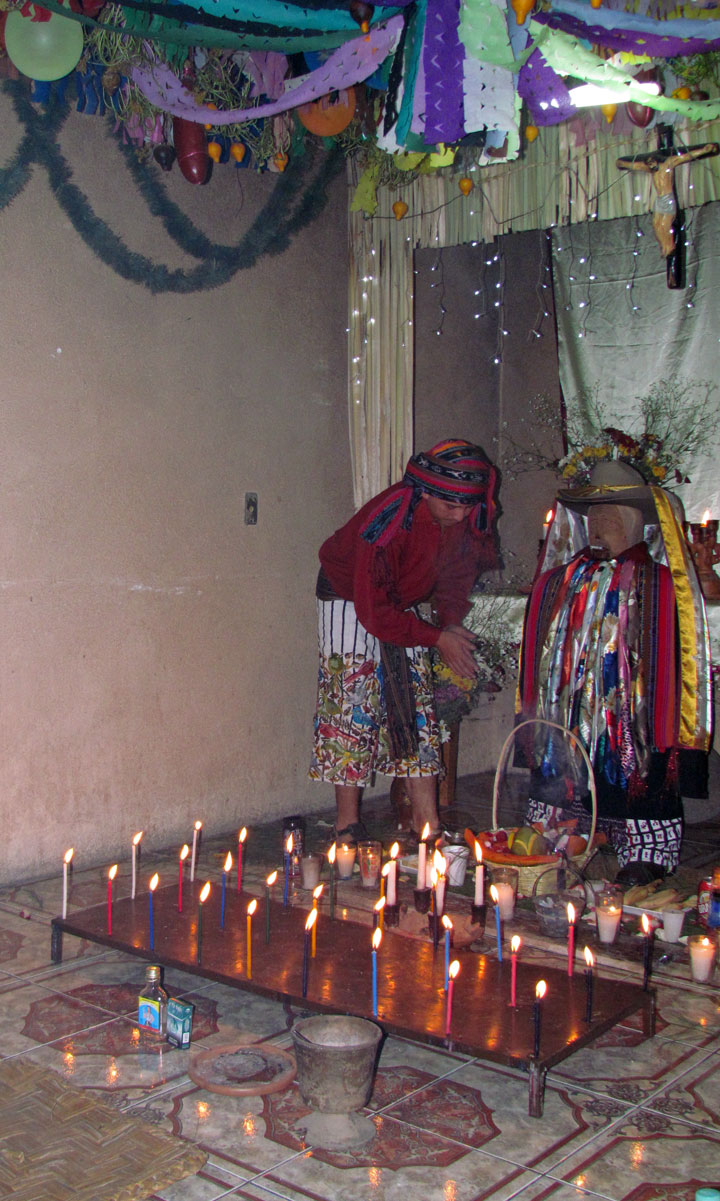

gifts to Maximón
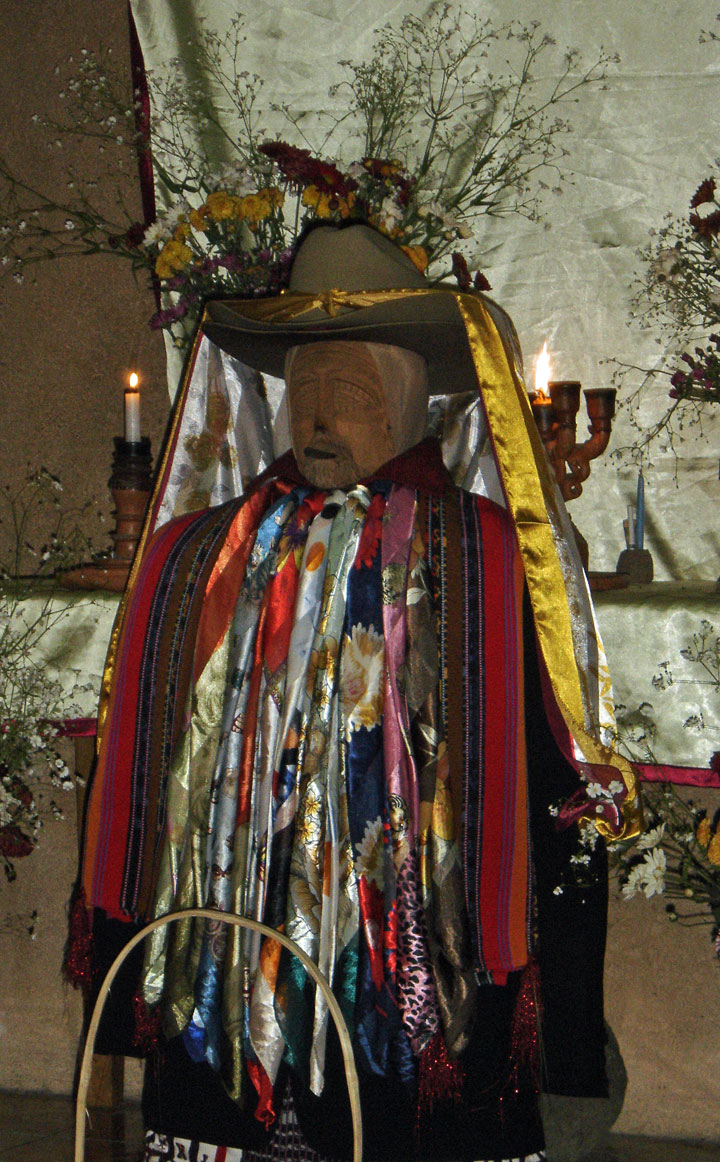
leaving Maximón